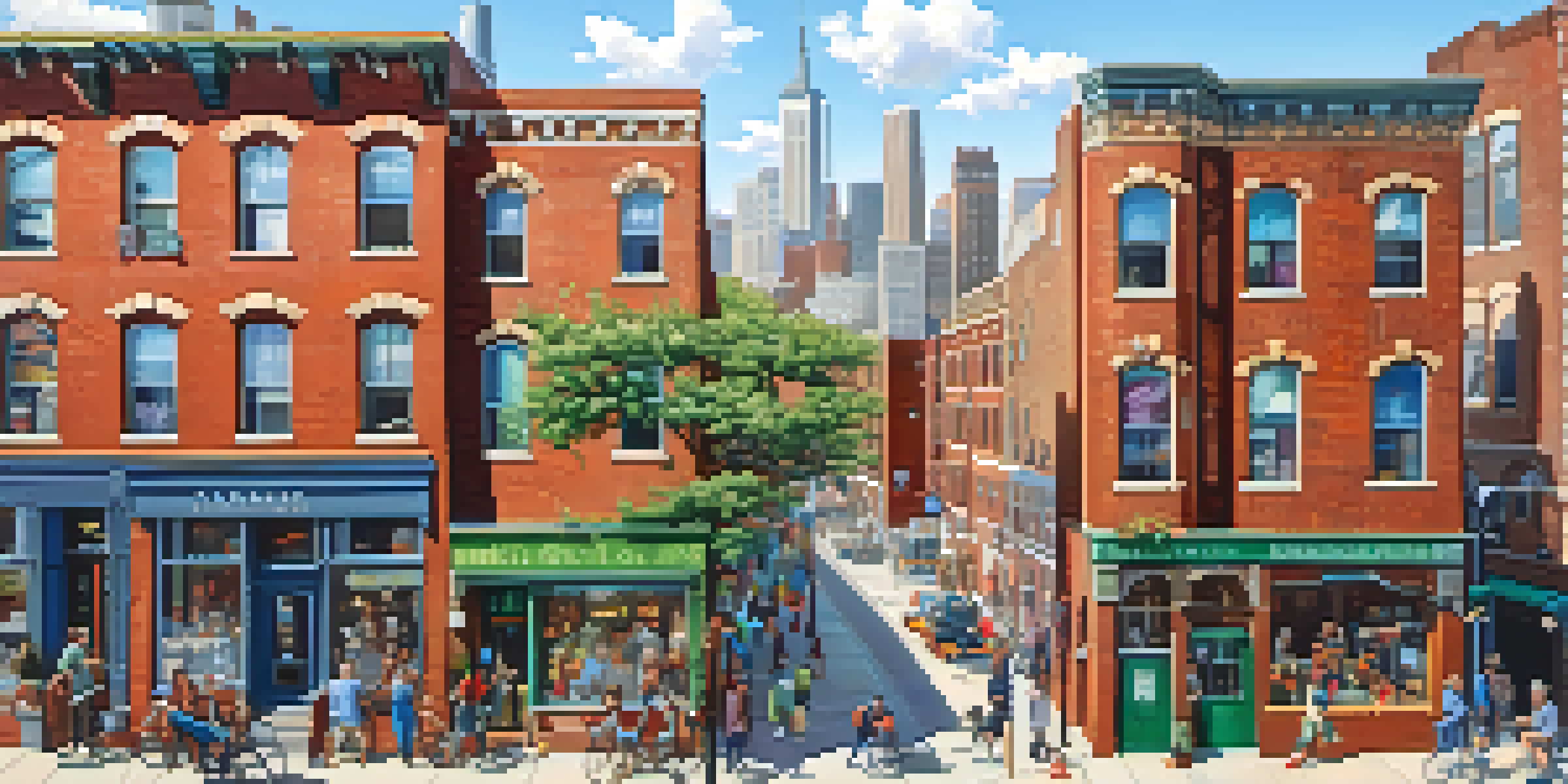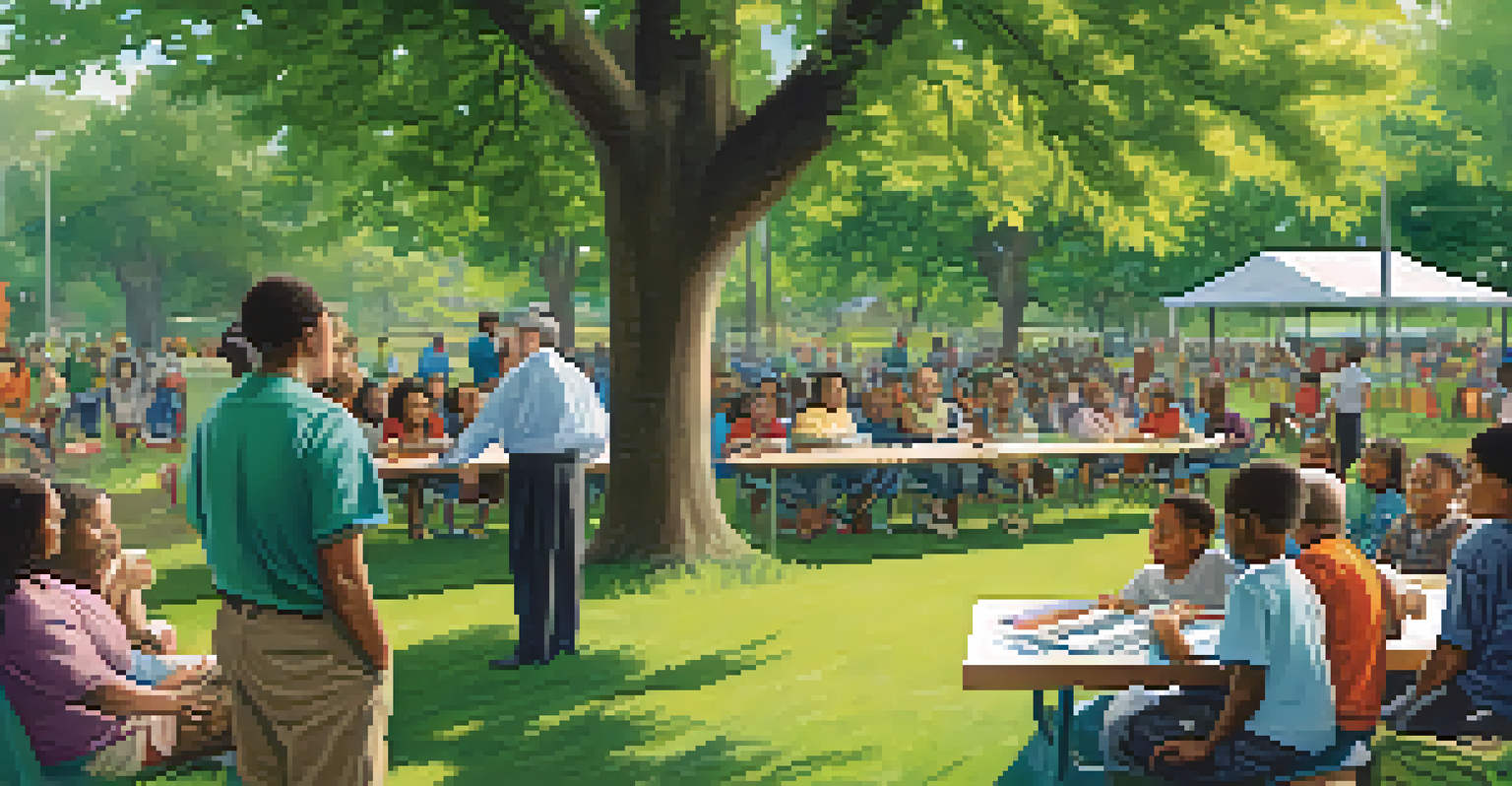Gentrification: Housing Affordability and Environmental Impact

Understanding Gentrification and Its Dynamics
Gentrification is a complex process where urban neighborhoods undergo transformation, often due to an influx of more affluent residents. This change can lead to improved amenities and infrastructure, but it can also displace long-time residents. While revitalization can seem beneficial, it often raises questions about who truly benefits from these changes.
Gentrification is a complex process where urban neighborhoods undergo transformation, often due to an influx of more affluent residents.
At its core, gentrification involves a shift in the socio-economic dynamics of a community. This shift can result from various factors, including economic development initiatives, housing demand, and even cultural trends. Understanding these dynamics is crucial as they lay the groundwork for the impacts on housing affordability and the environment.
As neighborhoods gentrify, the balance between development and preservation becomes a key concern. While new investments can enhance living conditions, they can also lead to higher rents and property taxes, squeezing out those who have lived there for generations. It's a delicate balance that requires careful consideration from policymakers and communities alike.
The Impact on Housing Affordability
One of the most significant consequences of gentrification is the impact on housing affordability. As more affluent residents move in, demand for housing increases, leading to rising property values and rents. This trend often makes it challenging for lower-income families to find affordable housing options in their own neighborhoods.

For instance, in cities like San Francisco and New York, once-affordable neighborhoods have seen dramatic price hikes, pushing many long-term residents out. This displacement can lead to a loss of community and cultural identity, as familiar faces and local businesses are replaced by newcomers. It's not just about real estate; it's about the fabric of the community.
Gentrification Displaces Long-Term Residents
As affluent newcomers move in, long-time residents often face rising rents and property values, leading to displacement and loss of community.
Addressing the issue of housing affordability requires innovative solutions, such as affordable housing initiatives and rent control measures. These strategies aim to provide stability for residents who might otherwise be forced to leave due to rising costs. However, striking the right balance between development and preservation is essential to ensure that neighborhoods remain inclusive.
Environmental Considerations in Gentrified Areas
Gentrification doesn't just impact people; it also has significant environmental implications. As neighborhoods undergo transformation, new developments often prioritize economic gain over ecological concerns. This can lead to the destruction of green spaces and the introduction of pollution sources, altering the local ecosystem.
The future of gentrification lies in our ability to embrace inclusive practices that prioritize both residents and the environment.
For example, new construction projects may replace parks and community gardens with high-rise buildings and commercial spaces. While these developments can bring jobs and services, they can also result in increased traffic, air pollution, and loss of biodiversity. It's crucial to consider these environmental factors when assessing the overall impact of gentrification.
Sustainable urban planning can help mitigate these environmental effects by ensuring that new developments incorporate green spaces and eco-friendly practices. By fostering a harmonious relationship between development and nature, communities can thrive without sacrificing their environmental health. This balance is essential for creating livable, resilient neighborhoods.
Community Responses to Gentrification Challenges
As gentrification reshapes neighborhoods, communities are finding ways to respond to the challenges it brings. Grassroots organizations and local activists often emerge to advocate for the rights of long-term residents, pushing back against displacement. Their efforts can lead to meaningful change and help maintain the community's character.
For instance, community land trusts and cooperative housing models are gaining traction as alternatives to traditional real estate development. These initiatives prioritize affordability and community ownership over profit, allowing residents to have a say in their neighborhood's future. Such approaches can empower residents and ensure that their voices are heard in the development process.
Environmental Impact of Urban Change
Gentrification can lead to ecological damage as new developments often prioritize economic gain over preserving green spaces and local ecosystems.
Moreover, fostering community engagement through town hall meetings and forums can help residents voice their concerns and collaborate on solutions. This inclusive approach not only strengthens community bonds but also ensures that development plans reflect the needs and desires of all residents. In this way, communities can actively shape their future amidst the challenges of gentrification.
The Role of Policy in Shaping Gentrification
Government policies play a crucial role in either exacerbating or alleviating the effects of gentrification. Zoning laws, tax incentives, and development regulations can influence how neighborhoods evolve and who benefits from that evolution. Policymakers have the power to create frameworks that either support affordable housing or prioritize high-end development.
For example, inclusionary zoning policies can require developers to allocate a portion of new units for affordable housing. This approach helps to create mixed-income communities and mitigates the risk of displacement. However, enforcement and compliance can be challenging, highlighting the need for robust regulatory frameworks.
Additionally, policies that promote tenant protections, such as rent control and eviction prevention laws, can provide essential safeguards for vulnerable populations. By prioritizing equitable development and community stability, policymakers can help ensure that the benefits of urban renewal are shared more broadly, leading to healthier, more inclusive neighborhoods.
The Importance of Sustainable Development Practices
Sustainable development practices are essential in addressing the dual challenges of housing affordability and environmental impact. By integrating green building techniques and community-focused design, urban planners can create spaces that benefit both residents and the environment. This approach not only enhances the livability of neighborhoods but also reduces their ecological footprint.
For instance, incorporating renewable energy sources, such as solar panels and green roofs, into new developments can lessen reliance on fossil fuels and improve air quality. Additionally, creating walkable neighborhoods with access to public transportation encourages sustainable commuting and reduces traffic congestion. These practices contribute to healthier communities that are more resilient to climate change.
Policy Shapes Gentrification Outcomes
Government policies, such as zoning laws and tenant protections, play a vital role in determining whether gentrification benefits all community members or exacerbates inequities.
Moreover, engaging residents in the planning process can lead to developments that truly reflect community needs and values. When residents have a say in how their neighborhoods evolve, they are more likely to support sustainable initiatives. This collaborative approach not only fosters a sense of ownership but also ensures that developments are beneficial for both people and the planet.
Future Directions: Finding Balance in Gentrification
Looking ahead, finding a balance between gentrification and its impacts on housing affordability and the environment is crucial. As urban areas continue to evolve, stakeholders must work collaboratively to create solutions that benefit everyone. This involves recognizing the complexities of gentrification and addressing the various needs of communities.
For example, fostering partnerships between developers, local governments, and community organizations can lead to innovative solutions that prioritize both economic growth and social equity. By aligning interests and sharing resources, these stakeholders can create developments that enhance community well-being while minimizing negative impacts.

Ultimately, the future of gentrification lies in our ability to embrace inclusive practices that prioritize both residents and the environment. As we navigate these changes, we must remain committed to creating vibrant, sustainable communities that honor their past while looking toward a brighter future.